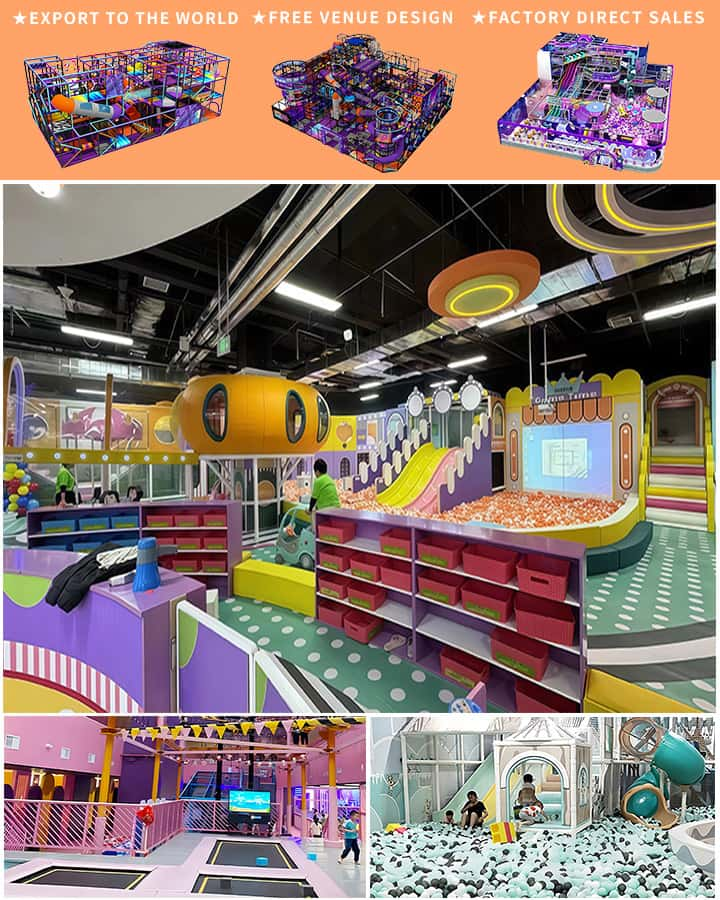Creating an engaging and stimulating playground is essential for the physical, social, and cognitive development of students. A well-designed playground not only provides a space for fun but also encourages learning through play. Here are some creative school playground equipment ideas that can transform any playground into an exciting, educational environment.
1. Interactive Learning Stations
Incorporating interactive learning stations can turn playtime into an educational experience. These stations could include:
- Math & Science Panels: Incorporate puzzles, riddles, and experiments related to math and science.
- Language Skills Boards: Interactive boards with word games, grammar challenges, and storytelling prompts.
- Geography Maps: Large, tactile world maps where students can learn about countries and continents while they play.
2. Nature-Inspired Play Areas
Bringing elements of nature into the playground can be both refreshing and educational. Consider:
- Water Play Features: Small, shallow water channels or water tables where kids can explore water flow and simple engineering concepts.
- Plant Gardens: Designated areas where students can plant and care for flowers, herbs, or even vegetables. This teaches responsibility and basic botany.
- Nature Scavenger Hunt Courses: Paths lined with various natural items like leaves, rocks, and plants for students to find and identify.

3. Physical Challenge Courses
Encouraging physical activity through playful challenges helps develop motor skills and promotes a healthy lifestyle. Examples include:
- Obstacle Courses: Ladders to climb, balance beams, tunnels, and cargo nets can create dynamic courses that test agility and coordination.
- Zip Lines and Climbing Walls: Safely installed zip lines and climbing structures provide thrilling adventures that build strength and confidence.
- Balance Beams and Rope Walks: Elevated paths requiring balance and focus improve stability and concentration.
4. Creative Arts Zones
Allowing children to express themselves through art fosters creativity and emotional development. Set up:
- Outdoor Chalkboard Walls: Large chalkboard surfaces where students can draw, write, and create collaborative art pieces.
- Musical Instruments: Permanently installed xylophones, drum sets, or chime bars where kids can experiment with music.
- Performance Stages: Small stages with microphones and curtains for impromptu plays, dance routines, or talent shows.
5. Social Interaction Spaces
Playgrounds should encourage cooperation, teamwork, and social skills. Facilitating these interactions can be done through:
- Team Sports Courts: Basketball hoops, soccer goals, or foursquare courts designed for cooperative games and friendly competition.
- Group Project Zones: Dedicated spaces equipped with building blocks, recycled materials, and craft supplies for group projects and collaborative construction.
- Quiet Conversation Corners: Cozy benches and shaded areas where students can sit and chat, read books, or engage in quiet activities.
6. Inclusive Play Equipment
Ensuring all students have access to playground equipment is crucial. Inclusive designs might include:
- Wheelchair-Accessible Swings: Swings with secure seats for children who use wheelchairs.
- Sensory Play Elements: Items like textured walls, musical instruments, and sensory paths cater to children with different sensory needs.
- Adaptive Climbing Structures: Climbing frames with varied grip options and support bars for children with mobility challenges.
7. Themed Playgrounds
Themed playgrounds can make the environment more engaging by providing a narrative element. Popular themes include:
- Space Adventure: Rocket ships, moonwalk pathways, and alien figures can spark imaginative play and interest in space exploration.
- Pirate Cove: Shipwrecks, treasure chests, and climbing masts encourage pretend play centered around pirate tales.
- Jungle Safari: Faux jungle environments with animal statues, vines to climb, and hidden caves stimulate adventure and exploration.
In conclusion, thoughtful and creative playground equipment can significantly enhance the student experience, making recess time not only enjoyable but also enriching. By incorporating interactive learning stations, nature-inspired areas, physical challenge courses, creative arts zones, social interaction spaces, inclusive designs, and themed environments, schools can create playgrounds that cater to the diverse needs and interests of all students.




